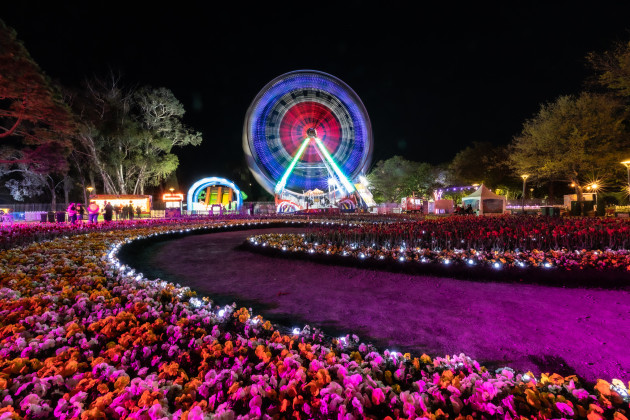Your Best Shot: The Dec/Jan 2024 picks!
After more than a decade of our photo competition Your Best Shot being only open to AP magazine readers and subscribers, we've decided to shake things up and open it up to everyone in Australia to enter from 2024.
There's a different theme in every issue of AP mag, and you can win great prizes thanks to our good friends at Blonde Robot, the Australasian distributors of Peak Design, 3 Legged Thing, and Angelbird.
If you'd like to enter yourself in 2024, you can find out all the details here.
To give you a taster of what to expect, here were our selections for the December/January 2024 edition of the competition. Our winner for this issue, Rudy Kalele, took home a Peak Design Travel Tripod Aluminium valued at $669.
Dec/Jan theme: Night
Our modern cameras make it easy to take photos when light levels are low, but the fundamentals of good photography still apply. You need a great subject, great composition, and great lighting – regardless of how little you have to work with. Here are our picks this issue.
This issue's winner

Editor’s comment
As Rudy Kalele says it, night photography is all about light painting.
Here, he tells us a perfect opportunity presented itself at Canberra's Floriade NightFest. “The slow moving giant wheel provided the perfect backdrop,” he explains. “The challenge was to take a long exposure shot, but not too long so as to bring out the full spectrum of colour and not whitewash the photo. A small aperture was deployed to try and get the star effect with the harsh light facing the camera.”
This is a great shot with a nice leading line through the flowerbeds that take us all the way to that amazingly bright giant ferris wheel. On the use of colour, you’ve done well to preserve the important bits without overcooking them either – no mean feat in a scene with some seriously busy lighting! Well done.
Runner-up

Editor’s comment
Dani Maver’s image Supermood may be a blend of two images, August’s super blue moon seen from Melbourne, and a crow on the roof through foliage, but they come together to make a very moody, atmospheric image that has a real cinematic vibe to it.
Your processing of the final image is also great, preserving the noise to add a bit of grit – something we probably don’t see enough of in an era of pin-sharp lenses and high definition camera sensors!

How I did it
This shot was taken in the Dark Sky Reserve near Mannum in SA. The Milky Way sits nicely above the abandoned tractor, and I used a torch to illuminate the tractor from different angles to try and highlight the machinery with several images at F5. I then exposed for the night sky at F2.8 taking several images before I finally blended the shots in Lightroom and Photoshop.

How I did it
This image is over 200 x 30 second exposure shots taken from about 3:15am - 5:15am one beautiful morning. I purposely chose this time so I could get that early morning glow in my image to really bring it to life with these beautiful star trails!

How I did it
The Paul Wild Observatory near Narrabri occasionally opens its gates at night to a limited number of keen astrophotographers, but unfortunately not on the night of the lunar eclipse in May, 2021.
Still, I managed to capture this image of one of the radio telescopes on a night the next month and incorporate 41 images of the lunar eclipse captured at another regional location.
The images of the moon were taken every seven minutes, with six to eight separate photographs for each one (stacked to improve the quality). I used a star tracker to capture the middle ten images to avoid blurring due to the movement of the moon. The final image is a compilation of more than 250 separate photographs, adjusted in Lightroom and blended in Photoshop.

How I did it
I visited Narooma early in the milky way season on a night near the new moon, so Narooma Beach was pitch-black and I couldn't see Glasshouse Rocks with my small head torch. I boosted the ISO to 12800 to compose this photo and waited for the small waves to rush around the foreground boulder.
The shots I captured with a lower ISO were just too dark, so I stuck with the higher ISO, knowing I could use the Lightroom de-noise function to reduce the noise. The orange airglow made the photo muddy, even with changes to the white balance, so I turned the image to monochrome.
I boosted blacks, highlights and whites a little to bring out the stars, waves and distant lighthouse. I also added a little clarity and contrast.


